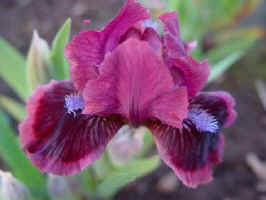

| Paul Black | Laurie Frazer | Bennett Jones | David Niswonger |
| Twyla Olmstead | Tony & Dorothy Willott |
Paul Black
HYBRIDIZER MEDAL WINNERS: Paul Black by Thomas Johnson
Reprinted from AIS Bulletin No. 329, April 2003


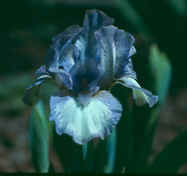
Chubby Cheeks
1984 - SDB

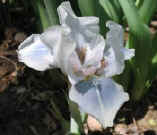
Red Zinger (IB) 1985- IB (on left)
Tu Tu Turquoise (SDB) (on right)
Paul seemed to be on a roll and 1990 saw a wealth of great things. SIGHS AND WHISPERS (TB) would win an AM and also take first place in
the Premio Firenze competition in Italy. This year also saw the release of Paul's first AB introduction, PRAIRIE THUNDER, which went on to win the
William Mohr Medal in 1998. It was also in 1990 that two important SDB parents were introduced: the wonderful fancy plicata PRIVILEGED CHARACTER
and the well-formed plicata TRANSCRIBE.
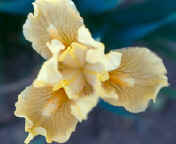
Tweety Bird (SDB) 1991
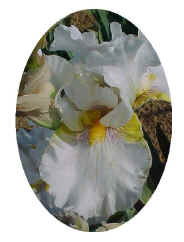
Goldkist (TB) 1993
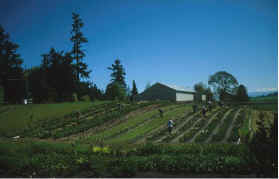
Mid-America Garden in Salem, Oregon
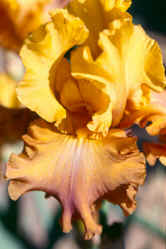
Dude Ranch (TB) 2000
[Since the printing of the above article in April, 2003, Paul�s iris (including those listed in this article) have moved forward to
receive higher AIS Awards. Some of Paul�s new introductions have also received awards that were not listed in the article above, and these iris
names are included in the Award Winner�s Chart on this web site. Paul may be justly proud that his iris have done well, not only in the USA, but have
fared extremely well in International Competition. His iris GRAPE JELLY won 2nd Place in the Moscow International Competition in 2003.]
Reprinted from AIS Bulletin No. 329, April 2003

Paul Black was born in the panhandle of Oklahoma in a small town named Guymon. With an
annual rainfall of less than 12 inches and horrible alkaline clay soil, this was hardly the place for someone who loved
plants. After finishing high school, Paul moved to Oklahoma City to attend college. He graduated with a degree in psychology and
sociology and part of a master's degree in business.
It was Paul's grandmother, Ruth Black, that Paul credits for his gardening talents. He would spend time with her in the summer helping her in her vegetable and flower garden. It was also in his grandmother's garden that Paul first became acquainted with iris. Ruth was a Spartan woman of modest means, and the iris she grew were given to her by a woman who to her amazement, sometimes paid $20 and $25 for a single rhizome!
It was Paul's grandmother, Ruth Black, that Paul credits for his gardening talents. He would spend time with her in the summer helping her in her vegetable and flower garden. It was also in his grandmother's garden that Paul first became acquainted with iris. Ruth was a Spartan woman of modest means, and the iris she grew were given to her by a woman who to her amazement, sometimes paid $20 and $25 for a single rhizome!
When Paul purchased his first home he remembered the beautiful iris in his grandmother's garden and wanted to plant some. After
going to a local nursery, he was told about a local iris society and of their annual rhizome sale. Paul went to that sale and purchased some plants.
The clerk at the sale told him if he kept the names on them he could enter them in their show. Next spring, he did just that and won his first Queen of
Show - he was hooked!
It was at a Sooner State Iris Society meeting that Paul met Cleo Palmer and Perry Dyer. Sensing Paul's enthusiasm they began to encourage him to try his hand at making a few crosses. It was 1979 when Paul made those first crosses and there was no turning back. It was also 1979 that Paul went into business with Perry, who was already producing a commercial catalog for his Contemporary Gardens. It was a partnership that lasted two years. Paul decided to quit his regular job and start his own iris business. The first Mid-America Garden catalog came out in 1981and Paul's first introductions were featured in the 1982 edition. One of those first introductions was a bright yellow IB named HARLOW GOLD. It went on to become a runner-up for the Sass Medal and is still popular today. TIGER PRINT (SDB) was introduced this same year and won Paul's first AM.
It was at a Sooner State Iris Society meeting that Paul met Cleo Palmer and Perry Dyer. Sensing Paul's enthusiasm they began to encourage him to try his hand at making a few crosses. It was 1979 when Paul made those first crosses and there was no turning back. It was also 1979 that Paul went into business with Perry, who was already producing a commercial catalog for his Contemporary Gardens. It was a partnership that lasted two years. Paul decided to quit his regular job and start his own iris business. The first Mid-America Garden catalog came out in 1981and Paul's first introductions were featured in the 1982 edition. One of those first introductions was a bright yellow IB named HARLOW GOLD. It went on to become a runner-up for the Sass Medal and is still popular today. TIGER PRINT (SDB) was introduced this same year and won Paul's first AM.


Chubby Cheeks
1984 - SDB
Paul quickly learned that his favorite class of iris was the SDBs. Great success came early when
seedling number 824E made its maiden bloom in 1982. Paul knew it was something special when it bloomed with its very round and fat form.
It would later be named and introduced in 1985 as CHUBBY CHEEKS. It has become one of the most used parents of all time. It won Paul his first Cook-Douglas Medal.
That was a good year for Paul as the popular RED ZINGER (IB) and the reblooming BLAZING SUNRISE (TB) were also introductions that year.
The laced blue-white BUBBLING LACE (TB) and the blue-white reverse UNDERSEA ADVENTURE (TB) were released in 1986. In 1988 the wildly colored GLITZ 'N GLITTER (TB) was introduced and won Paul his first Tall Bearded Award of Merit.
It would later be named and introduced in 1985 as CHUBBY CHEEKS. It has become one of the most used parents of all time. It won Paul his first Cook-Douglas Medal.
That was a good year for Paul as the popular RED ZINGER (IB) and the reblooming BLAZING SUNRISE (TB) were also introductions that year.
The laced blue-white BUBBLING LACE (TB) and the blue-white reverse UNDERSEA ADVENTURE (TB) were released in 1986. In 1988 the wildly colored GLITZ 'N GLITTER (TB) was introduced and won Paul his first Tall Bearded Award of Merit.
He next received an AM for OKLAHOMA CRUDE (TB), the totally unique TU TU TURQUOISE (SBD), and the SPOT OF TEA (MDB), which went on to win Paul his first Caparne-Welch Medal.


Red Zinger (IB) 1985- IB (on left)
Tu Tu Turquoise (SDB) (on right)
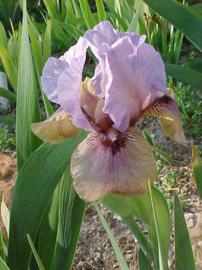  Prairie Thunder (AB) 1990 Prairie Thunder (AB) |
  Privileged Character (SDB) 1990 Privileged Character (SDB) 1990 |
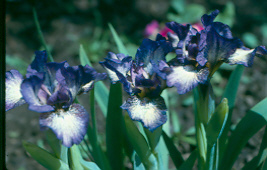  Transcribe (SDB) 1990 Transcribe (SDB) 1990 |
  Pumpin' Iron (SDB) 1990 Pumpin' Iron (SDB) 1990 |
But wait, that's not all! 1990 also saw the introduction of Cook-Douglas winner PUMPIN' IRON and Caparne-Welch Medal winner CINNAMON APPLES. I told you it was a great year! |
  Pumpin' Iron (SDB) 1990 Pumpin' Iron (SDB) 1990 |

Tweety Bird (SDB) 1991
The next two years saw such exciting things released as INKY DINKY (SDB '91) and SHE DEVIL (AB '92). It was also in 1992 that Paul's next exciting hybridizing break was cleverly named and released as TWEETY BIRD (SDB).
Paul was so excited when it bloomed that he called Miss Kitty (Kitty Dyer), whom he fondly refers to as his iris mom, to come quickly and see it. Well, she was in such a hurry to get to Paul's to see what all the fuss was about that she got a speeding ticket! Paul's excitement over TWEETY BIRD wasn't misplaced. With its wonderful ruffled form and tangerine beard, it would come to be as important a parent as CHUBBY CHEEKS. It would go on to be a runner up for the Cook-Douglas Medal two years running.
Paul was so excited when it bloomed that he called Miss Kitty (Kitty Dyer), whom he fondly refers to as his iris mom, to come quickly and see it. Well, she was in such a hurry to get to Paul's to see what all the fuss was about that she got a speeding ticket! Paul's excitement over TWEETY BIRD wasn't misplaced. With its wonderful ruffled form and tangerine beard, it would come to be as important a parent as CHUBBY CHEEKS. It would go on to be a runner up for the Cook-Douglas Medal two years running.
The popular white GOLDKIST (TB), with its gold hafts and wild purple haft veins, was the highlight of the 1993 introductions.
It was voted an AM, and also won third place and the award for most uniquely colored TB in the Premio Firenze competition of 1995.
In 1993, tragedy, in the form of iris rot, hit Mid-America Garden and years of hybridizing work were lost in a matter of weeks. Many wonderful seedlings slated for introduction were gone and it would be three years before a bearded iris listing would return to the catalog.
In 1994, Thomas Johnson moved from Canada and became a partner in the business. With their combined efforts, bearded iris returned to the catalog in 1996. The TBs TOM JOHNSON and RUTH BLACK were released this year. In 1997, the laced violet LOIS PARRISH (TB) and APRICOT TOPPING (BB) were introduced.
It was voted an AM, and also won third place and the award for most uniquely colored TB in the Premio Firenze competition of 1995.
In 1993, tragedy, in the form of iris rot, hit Mid-America Garden and years of hybridizing work were lost in a matter of weeks. Many wonderful seedlings slated for introduction were gone and it would be three years before a bearded iris listing would return to the catalog.
In 1994, Thomas Johnson moved from Canada and became a partner in the business. With their combined efforts, bearded iris returned to the catalog in 1996. The TBs TOM JOHNSON and RUTH BLACK were released this year. In 1997, the laced violet LOIS PARRISH (TB) and APRICOT TOPPING (BB) were introduced.

Goldkist (TB) 1993

Mid-America Garden in Salem, Oregon
The year 1998 once again brought changes, as the business was moved to Salem, Oregon. After years of struggling with
many weather and disease-related problems, Paul was finally in iris heaven.
Exciting introductions followed. Notable among them are DEEP DARK SECRET (TB), BLUE CHIP STOCK (MTB), THIS AND THAT (IB) and SINISTER DESIRE (IB), and HOT JAZZ (SDB) and YIPPY SKIPPY (SDB). In 1999, standout TBs BIG SQUEEZE, HABIT, and VIBRANT were put on the market as well as the MDB WIGGLE.
Exciting introductions followed. Notable among them are DEEP DARK SECRET (TB), BLUE CHIP STOCK (MTB), THIS AND THAT (IB) and SINISTER DESIRE (IB), and HOT JAZZ (SDB) and YIPPY SKIPPY (SDB). In 1999, standout TBs BIG SQUEEZE, HABIT, and VIBRANT were put on the market as well as the MDB WIGGLE.
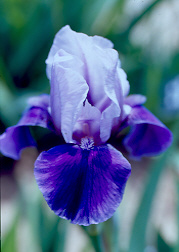  Blue Chip Stock (MTB) 1998 Blue Chip Stock (MTB) |
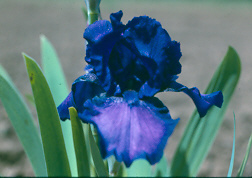  This and That (IB) 1998 This and That (IB) |
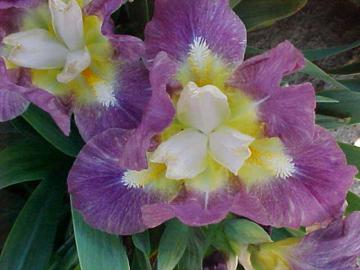  Yippy Skippy (IB) 1998 Yippy Skippy (SDB) |
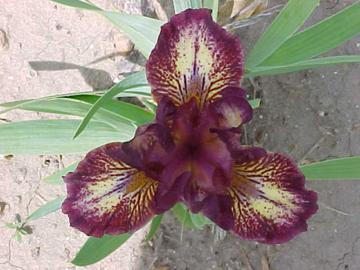  Wiggle (MDB) 1998 Wiggle (MDB) |
The start of a new century saw the release of the dramatic red bearded black DEVIL MAY CARE (IB) and crisply
patterned plicata INFINITY RING (IB). Other highlights include ARTFUL (SDB) and CACHET (SDB), and the daintily ruffled TINGLE (MDB).
Year 2000 also saw the introduction of KEEPING UP APPEARANCES (TB) and DUDE RANCH (TB); the latter went on to win Paul his second Premio Firenze award.
Through the years, Paul's introductions have been awarded a total of 93 HMs, 22 AMs, two Cook-Douglas Medals, two Caparne-Welch Medals, and one William Mohr Medal. They have also received 30 awards in the International Iris Competition in Florence, Italy, including two first place gold medals. There looks to be no slowing him down. A stroll through his seedling patch in the spring shows it is clearly the SDBs that still have his heart.
Year 2000 also saw the introduction of KEEPING UP APPEARANCES (TB) and DUDE RANCH (TB); the latter went on to win Paul his second Premio Firenze award.
Through the years, Paul's introductions have been awarded a total of 93 HMs, 22 AMs, two Cook-Douglas Medals, two Caparne-Welch Medals, and one William Mohr Medal. They have also received 30 awards in the International Iris Competition in Florence, Italy, including two first place gold medals. There looks to be no slowing him down. A stroll through his seedling patch in the spring shows it is clearly the SDBs that still have his heart.

Dude Ranch (TB) 2000
  Apricot Topping (BB) 1997 Apricot Topping (BB) |
  Trajectory (SDB) 1997 Trajectory (SDB) |
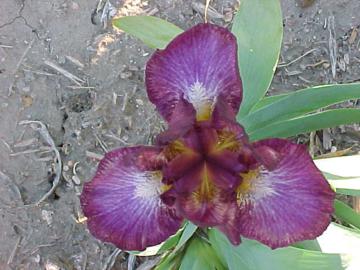  Wild Hair (SDB) 1998 Wild Hair (SDB) |
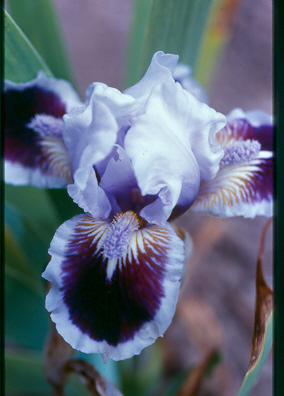  Puddy Tat (SDB) 2002 Puddy Tat (SDB) |
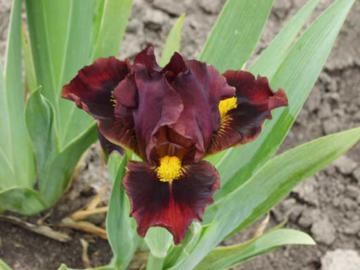  Irrepressible (SDB) Irrepressible (SDB) |
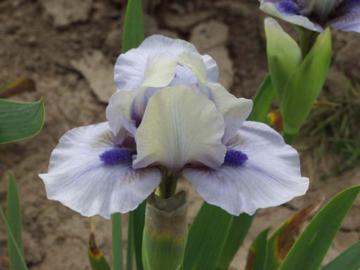  Dime (SDB) Dime (SDB) |
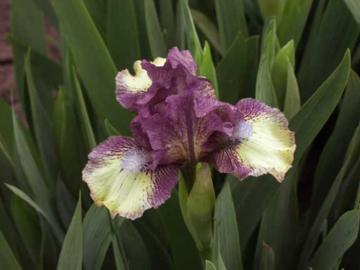  Chart (SDB) Chart (SDB) |
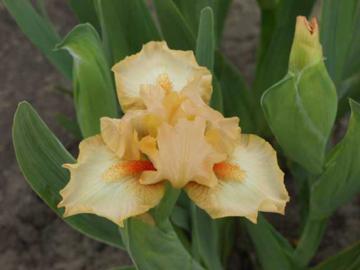  L205B L205B |
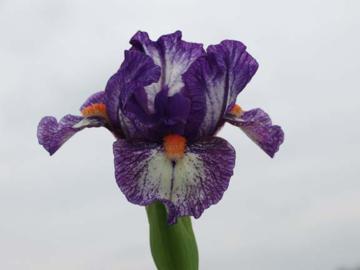  Hugs (SDB) Hugs (SDB) |
Paul has a fantastic eye for emerging patterns and colors to which his peers can attest. After seeing his seedling patch last spring, I have to say: The best is still to come! |
||
  Frenetic (SDB) Frenetic (SDB) |
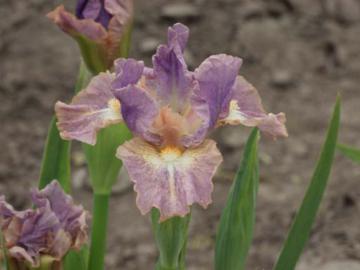  L323A L323A |
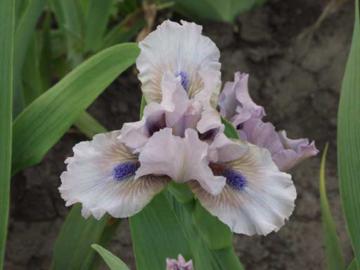  L353A L353A |
  M250C M250C |
Paul's iris CAT�S EYE won the Walther Cup in 2004. Congratulations, Paul!
Paul has introduced well over 200 iris during his hybridizing career to this 2004 date. Only a few are here for your viewing. Some of the iris are in "thumbprint" form � to see a larger view, click on the smaller iris picture. Others are on a list � to see the iris, click on the iris name.
Paul has introduced well over 200 iris during his hybridizing career to this 2004 date. Only a few are here for your viewing. Some of the iris are in "thumbprint" form � to see a larger view, click on the smaller iris picture. Others are on a list � to see the iris, click on the iris name.
| Iris Name (Type) Intro | Iris Name (Type) Intro | Iris Name (Type) Intro |
|---|---|---|
Autumn Blush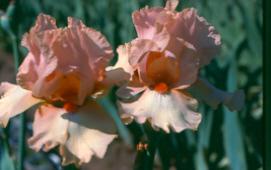 (TB) 1983 |
Forte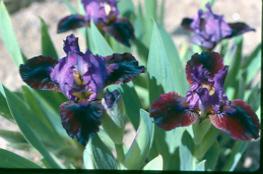 (SDB) 1987 |
Pirate's Patch (SDB) 1994 |
Bee Mused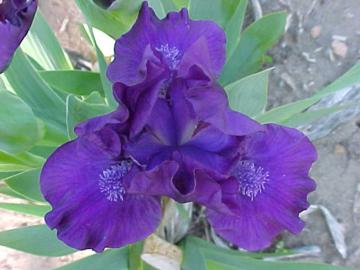 (SDB) 1997 |
Frolicsome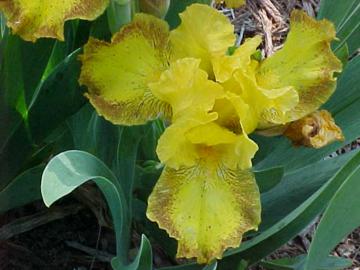 (IB) 1999 |
Porcelain Ballet (TB) 1984 |
Blazing Sunrise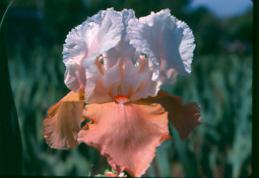 (TB) 1983 |
Frugal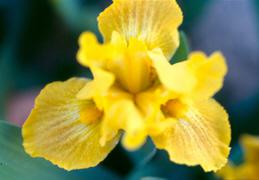 (SDB) 1997 |
Procession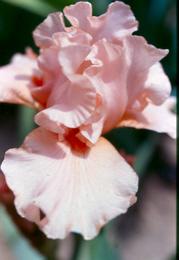 (IB) 2002 |
Blue Neon (SDB) 1989 |
Fuzzy Face (SDB) 1986 |
Robusto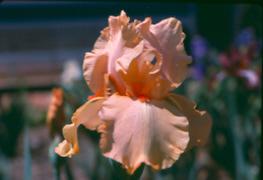 (TB) 1983 |
Boisterous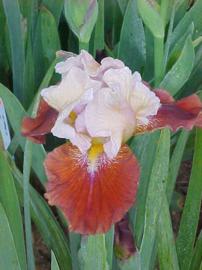 (BB) 1998 |
Garden Gnome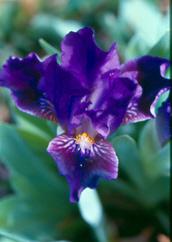 (MDB) 1987 |
Royal Chant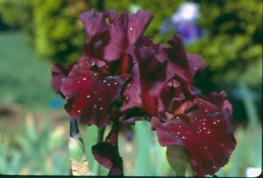 (TB) 1986 |
Brassy Broad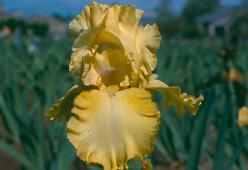 (TB) 1986 |
Glitz n' Glitter (TB) 1987 |
Sass With Class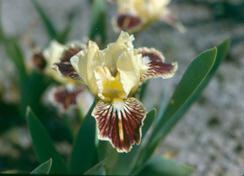 (SDB) 1988 |
Breezy Blue (SDB) 2003 |
Goosebumps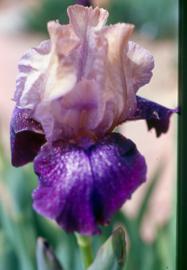 (IB) 2001 |
Shooting Sparks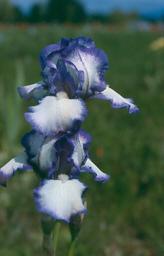 (IB) 1988 |
Bunny Hop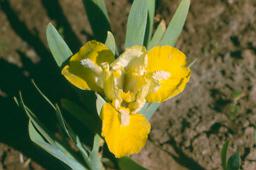 (SDB) 1987 |
Habit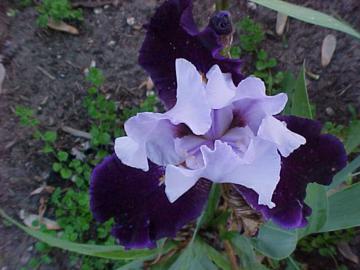 (TB) 1999 |
Snow Job (TB) 1998 |
Dazzling Jewel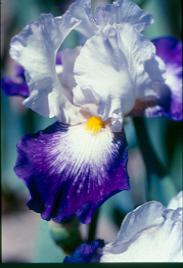 (TB) 2000 |
Hat Trick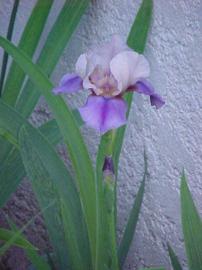 (IB) 1983 |
Snow White's Rogue (TB) 1981 |
Details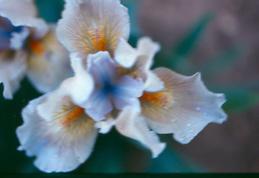 (SDB) 1998 |
Mary's Lamb (SDB) 1986 |
Undersea Adventure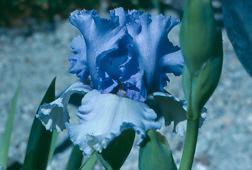 (TB) 1986 |
Dolce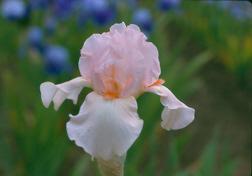 (SpX) 2003 |
Midnight Mist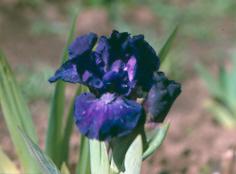 (SDB) 1995 |
Voices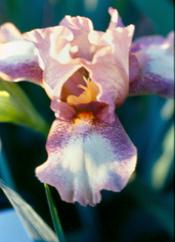 (SDB) 2001 |
Fairy Fun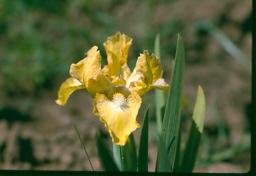 (MDB) 1995 |
Mysterious Balance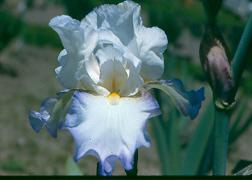 (TB) 1996 |
Wake Up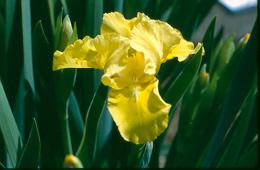 (SDB) 1988 |
First Alert (SDB) 1997 |
Oklahoma Crude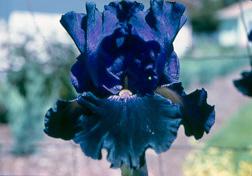 (TB) 1988 |
Well Suited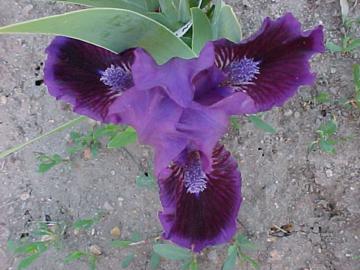 (SDB) 1990 |
